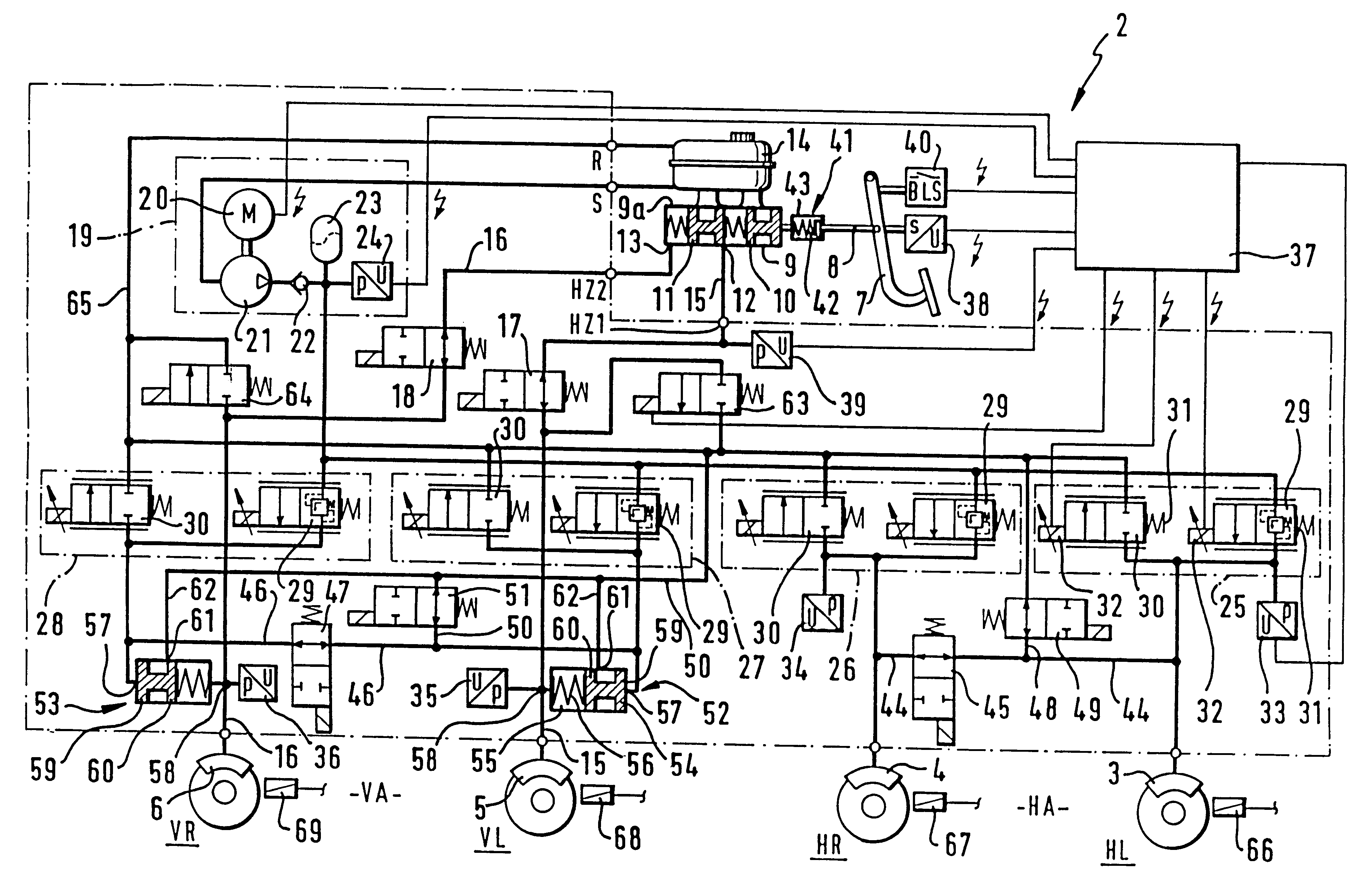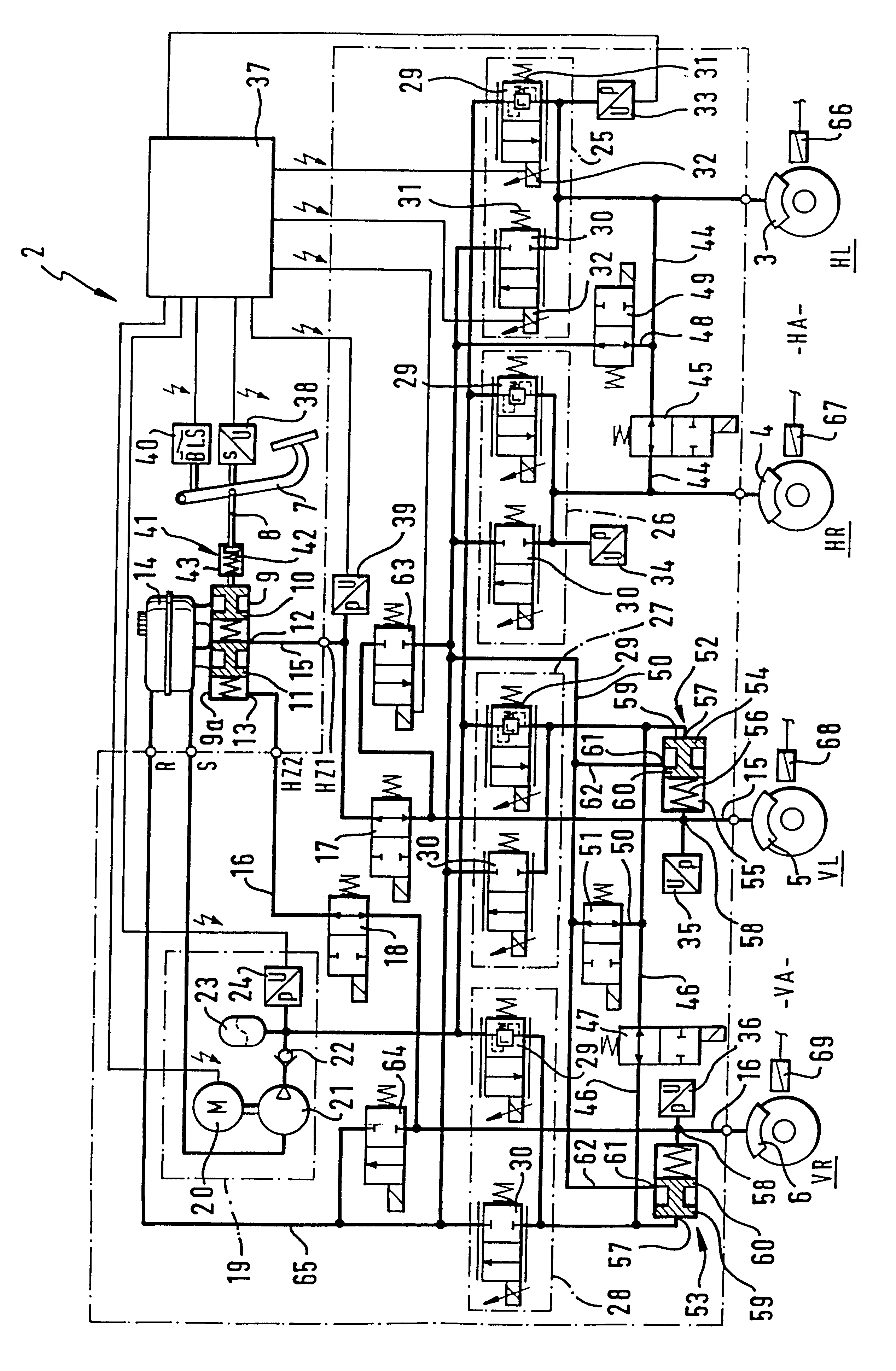Hydraulic vehicle braking system
- Summary
- Abstract
- Description
- Claims
- Application Information
AI Technical Summary
Benefits of technology
Problems solved by technology
Method used
Image
Examples
Embodiment Construction
The hydraulic vehicle brake system 2 according to the invention and according to the FIGURE has hydraulically actuatable wheel brakes 3, 4, 5, and 6, a brake pedal 7 for executing auxiliary braking operations with muscle power, and a master cylinder 9, which is embodied with two circuits, the master cylinder can be actuated by way of a pedal rod 8 with the exertion of force on the brake pedal 7, and for this purpose, has a first master cylinder piston 10, a second master cylinder piston 11, a first master cylinder connection 12 associated with the first master cylinder piston 10, and a second master cylinder connection 13 associated with the second master cylinder piston 11, as well as a reservoir 14 for supplying fluid to the master cylinder. The master cylinder pistons 10 and 11 and the reservoir 14 including a housing 9a can be manufactured with structural features that can be inferred from the prior art. A first auxiliary brake line 15 leads from the first master cylinder connec...
PUM
 Login to View More
Login to View More Abstract
Description
Claims
Application Information
 Login to View More
Login to View More - R&D
- Intellectual Property
- Life Sciences
- Materials
- Tech Scout
- Unparalleled Data Quality
- Higher Quality Content
- 60% Fewer Hallucinations
Browse by: Latest US Patents, China's latest patents, Technical Efficacy Thesaurus, Application Domain, Technology Topic, Popular Technical Reports.
© 2025 PatSnap. All rights reserved.Legal|Privacy policy|Modern Slavery Act Transparency Statement|Sitemap|About US| Contact US: help@patsnap.com


